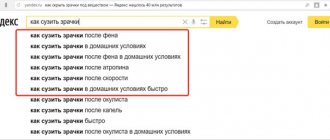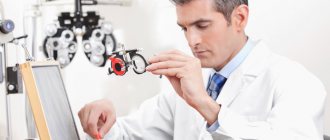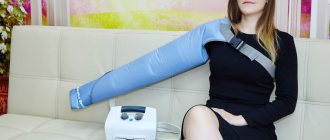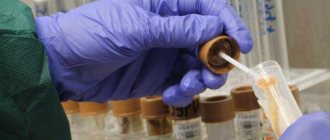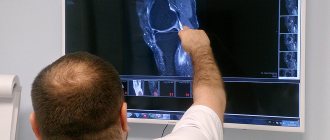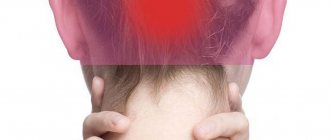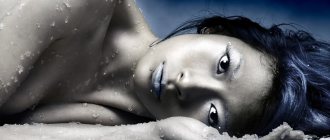Lumbar ischialgia is a term denoting pain in the lower back with irradiation into the buttock, into the leg, along the back of the leg. Pain may be accompanied by numbness and tingling in the area of innervation of the sciatic nerve. The term lumboischalgia (synonymous with lumbosacral radiculitis) refers only to pain syndrome and is not a diagnosis.
Luboischialgia is characterized by one or more symptoms:
- Constant pain only in the buttock or thigh on one side (less often in both legs)
- Pain worsens when sitting
- Burning or tingling sensation spreading down the leg
- Weakness, numbness, or loss of movement in the leg
- Constant pain on one side
- Severe pain that may make it difficult to stand or walk
Pain syndrome with lumbar ischialgia can be of varying intensity depending on the underlying disease that led to the development of lumbar ischialgia. Symptoms of lumbar ischialgia are caused by irritation of the sciatic nerve.
The sciatic nerve is the largest nerve in the torso and is made up of individual nerve roots that originate in the lumbar spine (at L3) and collectively form the “sciatic nerve.” The sciatic nerve runs from the lumbar spine to the leg. Parts of the sciatic nerve then branch in each leg and innervate specific parts of the leg - buttocks, thighs, calves, feet, toes.
Symptoms of lumbar ischialgia (lumbosacral radiculitis) such as pain in the leg, numbness, tingling, weakness may vary depending on where the nerve compression occurs.
The incidence of lumboischalgia (lumbosacral radiculitis) increases in middle age. Lumbar ischialgia rarely occurs under the age of 20; such pain syndromes are most likely at the age of 40-50 years, and in the older age group the likelihood of lumbar ischalgia decreases.
Often, specific events or injuries do not cause inflammation of the sciatic nerve, but over time the damage leads to the development of sciatica. In most patients, conservative treatment can be quite effective, and the pain syndrome decreases significantly within a few weeks, but in a certain number of patients the pain syndrome may be persistent.
Causes
There are 6 most common causes of lumbar ischialgia:
Herniated disc in the lumbar spine.
A herniated disc occurs when the soft inner core of the disc (nucleus pulposus) protrudes through the fibrous outer ring, affecting nearby nerve roots.
Osteochondrosis
Degenerative changes in the intervertebral discs are a natural involutional process that occurs as the body ages. Degenerative changes in the discs can lead to irritation of the roots and the development of pain.
Spondylolisthesis
This condition occurs when the vertebral arches are damaged (spondylolysis), resulting in the sliding of one vertebra in relation to another. Displacement of the vertebra causes damage and displacement of the intervertebral disc, which together can lead to irritation of the nerve roots and irritation of the sciatic nerve.
Spinal stenosis of the lumbar
This condition usually causes inflammation of the sciatic nerve due to narrowing of the spinal canal. Spinal stenosis in the lumbar region is most often associated with natural involutional changes in the spine and occurs in patients over 60 years of age. The condition usually results from a combination of one or more of the following factors: enlargement of the facet joints due to bony overgrowth, soft tissue overgrowth (ligamentous tissue), and disc bulging (herniated disc).
Piriformis syndrome
Irritation of the sciatic nerve can occur in the area in the buttock under the piriformis muscle. If there is a spasm of the piriformis muscle or other changes in this muscle, the sciatic nerve may be affected with the development of pain. And although this syndrome is an independent disease, pain in the leg can be similar to lumbar ischialgia.
Sacroiliac joint dysfunction
Irritation of the sacroiliac joint can also cause irritation of the L5 root, which exits at the top of the sacroiliac joint, and if there is a problem in this joint, inflammation of the sciatic nerve and pain may occur. Pain in the leg can be similar to that which occurs with lumbar ischialgia (lumbosacral radiculitis).
Other causes of lumbar ischialgia
A number of other conditions and diseases can cause inflammation of the sciatic nerve, including:
- Pregnancy. Changes in the body that occur during pregnancy, including weight, a shift in center of gravity, and hormonal changes, can cause inflammation of the sciatic nerve during pregnancy.
- Presence of scar tissue. If scar tissue presses on nerve roots, it can irritate the sciatic nerve
- Crick. In some cases, inflammation associated with muscle strain can put pressure on the nerve roots and cause inflammation of the sciatic nerve.
- Spinal tumors. A tumor in the spine (most often of metastatic origin) can have a compressive effect on the sciatic nerve.
- Infections. Infections rarely occur in the spine, but can also cause an impact on the roots with the development of inflammation of the sciatic nerve.
Diagnostics
Diagnosis of diseases accompanied by pain in the toes is carried out by orthopedic traumatologists. If necessary, rheumatologists, surgeons, dermatologists, and other specialists are involved in the examination. The examination plan includes:
- Survey.
The doctor finds out the time and circumstances of the appearance of pain and other signs, establishes the connection of pain with external circumstances, studies life history, family history. - Physical examination.
During the examination, the specialist evaluates the appearance of the foot and fingers, determines the presence of deformities, swelling, local hyperthermia, and discoloration of the skin. Examines range of motion, sensitivity, pulsation of arteries. - X-ray of the toes.
Visualizes dislocations, fractures, areas of restructuring or destruction of bones and joints, degenerative and inflammatory changes. - Dermatoscopy.
It is carried out to differentiate callus and onychogryphosis from other diseases, to exclude the mycotic or viral nature of the lesion. According to indications, it is supplemented with other dermatological techniques. - Ultrasound.
Performed for vascular diseases. Duplex scanning and ultrasound scanning allow us to study the condition and patency of the arteries, and the speed of blood flow. - Laboratory research
. Recommended for confirming inflammatory processes, detecting markers of rheumatic diseases, and studying flora.
Examination by a traumatologist-orthopedist
Symptoms
As a rule, with lumbar ischialgia, symptoms occur on one side, and the pain starts from the lower back and goes down the back of the thigh down to the foot.
- Pain in the lower back is usually less intense than in the leg.
- Pain, as a rule, on one side of the lower back with irradiation into the buttock or thigh along the sciatic nerve - along the back of the thigh, lower leg and foot.
- The pain decreases when the patient lies down and when walking and intensifies when standing or sitting.
- The pain is acute and burning in nature.
- Some patients may describe a feeling of tingling, numbness, or weakness in the leg.
- Weakness or numbness when moving your leg.
- Severe or shooting pain in the leg that may make it difficult to stand or walk.
- Depending on the location of the effect on the sciatic nerve, pain may also occur in the foot and toes.
Symptoms of lumbar ischialgia depend on where the root compression occurs.
For example:
- L4 root - Symptoms will usually appear on the hip. Patients may experience weakness when straightening the leg and possibly a decreased knee reflex.
- L5 root – symptoms may occur in the big toe and ankle. Patients may feel pain or numbness in the top of the foot (between the big and second toe).
- S1 root – symptoms may appear on the outer part of the foot, radiating to the toes and little toe. Patients may experience weakness when lifting the foot or trying to stand on tiptoes. There may also be decreased ankle reflexes.
When several roots are compressed, a combination of symptoms is possible.
There are a number of symptoms that deserve special attention, as they require emergency medical attention, sometimes even surgical intervention. These symptoms are:
- Symptoms that continue to worsen rather than improve may indicate possible nerve damage, especially if neurological symptoms have progressed (eg, weakness in the leg).
- Symptoms of lumbar ischialgia occur in both legs and there are signs of bowel or bladder dysfunction, which may be a sign of cauda equina syndrome. For cauda equina syndrome, emergency surgery is indicated.
If you have these symptoms, you should immediately seek medical help.
Why do discomfort occur in the legs and what can be done about it?
Many doctors in their practice have encountered complaints of discomfort in the legs that appear in the evening or at night. These are sensations that are described in various terms: legs itch, goosebumps crawl, blood boils, presses, tingles, bursts, twists. It becomes easier if you walk around, take a warm shower, and perform active leg movements. These symptoms may indicate restless legs syndrome.
Restless legs syndrome - what is it?
This is a condition in which discomfort appears in the limbs while lying down. This often happens at night when a person is sleeping. The condition can be so uncomfortable that you have trouble sleeping. The result is chronic insomnia.
There is an opinion that office workers who lead a sedentary lifestyle and may have problems with the spine
. However, as the practice of doctors shows, this condition can haunt people of different professions and different ages. This condition is often hereditary.
Restless legs syndrome as a concomitant condition
The syndrome itself is considered an independent disease. But sometimes this condition can accompany a number of other diseases.
- Diseases associated with circulatory disorders. The cause of restless legs syndrome may be atherosclerosis of the arteries, in which the flow of blood from the arteries is reduced and the outflow of blood from the veins is disrupted. With this disease, smoking and constant work on your feet are dangerous. By changing your work and lifestyle in general, there is a chance to reduce negative symptoms.
- Conditions in which there is a deficiency of B vitamins, iron, magnesium. Usually in such situations there are many different symptoms. Therefore, before you start taking vitamins and supplements, it is necessary to undergo laboratory tests to avoid liver problems.
- Metabolic disorders: diabetes mellitus, hypothyroidism, thyrotoxicosis, renal failure, rheumatological diseases.
Symptoms accompanying the syndrome
As an independent disease, restless legs syndrome has a number of symptoms:
- Unpleasant sensations appear in the evening and at night;
- There is a strong need to actively move the legs when unpleasant sensations appear, even at rest;
- Painful sensations recede after active movement of the limbs.
There are symptoms that accompany pain in the limbs:
- Sleep disorders;
- The condition worsens;
- There are no major diseases listed above.
If this disease is present in the family history, a polysomnographic study was carried out, in which movements of the limbs were recorded during sleep and other symptoms were present - you should seek help from a specialist.
The main reasons contributing to the occurrence of the disease
Different structures of the brain and spinal cord, as well as the nervous system, are responsible for the development of restless legs syndrome. Often dopamine, or specific disorders of iron metabolism in the cells of the central nervous system, becomes responsible for the condition.
The metabolism of dopamine involves thyroid hormones. Therefore, diseases related to the thyroid gland may be the cause of restless legs syndrome.
How can you recover from an illness?
Responsibility for choosing the direction of therapy lies with the doctor.
When the syndrome is mild or moderate, non-drug therapy can be used:
- Physical therapy or yoga classes;
- Avoid caffeine-containing products 6 hours before bedtime;
- Taking water procedures before bed, you can do foot baths;
- Maintain sleep hygiene;
- Eliminate any activities that require high concentration of attention;
- Maintain a sleep-wake schedule.
If the syndrome is concomitant, it is necessary to treat the underlying disease.
Author: K.M.N., Academician of the Russian Academy of Medical Sciences M.A. Bobyr
Treatment
In most cases, conservative treatment of lumbar ischialgia is quite effective. The range of treatment methods for lumbar ischialgia is wide and is aimed at reducing compression of the nerve roots and reducing pain. The most effective is the use of an integrated approach to the treatment of lumbar ischialgia and the use of a combination of various treatment methods (physiotherapy, massage, manual therapy, drug treatment, acupuncture and exercise therapy).
Drug treatment . The use of anti-inflammatory drugs (ibuprofen, naproxen, voltaren), COX-2 inhibitors (Celebrex) can reduce inflammation, which leads to a decrease in pain.
Epidural injections . If severe pain is present, an epidural steroid injection may be given. Epidural steroid administration differs from oral steroid administration in that the drugs are injected directly into the painful area around the sciatic nerve, which can quickly reduce inflammation and relieve pain. The effect of such a procedure is usually temporary, but it helps to relieve severe pain quite quickly.
Manual therapy
Modern gentle manual therapy techniques make it possible to restore the mobility of the motor segments of the spine, remove muscle blocks, improve the mobility of the facet joints and can sometimes significantly reduce compression of nerve fibers.
Acupuncture also helps reduce pain and restores conduction through nerve fibers.
Massage
Therapeutic massage methods can improve microcirculation, relieve muscle spasms, and also increase the body's production of endorphins.
Physiotherapy . Existing modern methods of physiotherapy (cryotherapy, laser therapy, ultrasound, electrophoresis) can reduce inflammation, improve blood circulation and thus reduce pain.
Exercise therapy . Physical exercises, which need to be included after pain has been reduced, allow you to restore the muscle corset and normalize the biomechanics of the spine, improve blood circulation in the motor segments. Physical exercises include both mechanotherapy (exercises on machines) and gymnastics, which allows you to develop both muscles and strengthen the ligamentous apparatus. Exercises for lumbar ischialgia must be selected with a physical therapy doctor (instructor), since independent exercises often lead to a relapse of symptoms.
Surgery
Indications for surgical treatment are the following factors:
- Severe pain in the leg that lasts for more than 4 to 6 weeks.
- Lack of effect from conservative treatment and persistence or worsening of neurological symptoms.
- Pain syndrome significantly impairs the patient's quality of life and the patient's ability to participate in daily activities
Urgent surgery is usually only necessary if there are progressive neurological symptoms (increasing weakness in the legs or sudden loss of bowel or bladder function).
Features of treatment
Surgery is required for infected wounds, the formation of purulent foci, or significant damage to joints or ligaments. In other cases, conservative treatment is sufficient, which is aimed at:
- elimination of pain and swelling;
- elimination of inflammatory foci;
- improved blood circulation;
- regeneration of articular tissues;
- strengthening ligaments;
- normalization of load distribution on the feet;
- increasing local immunity;
- restoration of foot functions.
To solve these problems, medications are used (anti-inflammatory drugs, chondroprotectors and others), as well as non-drug methods: physiotherapy, physical therapy and massage. Only an integrated approach can completely cope with pathologies that cause pain and numbness in the soles of the feet.
Preventing heel pain when walking
If your job requires prolonged standing or walking, the following guidelines should be followed:
- Give your legs a rest
. If you have to stand a lot, place a low stool or a rolled-up towel at your feet. Periodically place your foot on an elevation so that the muscles have time to relax and tissue nutrition can be restored. After a while, change your leg. - Wear comfortable shoes with low heels
. If necessary, use orthopedic insoles or shoes with orthopedic heels. Make sure your shoes don't put pressure on your feet or pinch blood vessels. - Watch your diet and try to lose excess weight
. To relieve heel pain in the morning, consume as many natural vitamins and minerals as possible and as little simple carbohydrates as possible (sweet fruits, baked goods, fast food, sugary drinks). - If an orthopedist or rheumatologist has ruled out the inflammatory or traumatic nature of heel pain, it is advisable to alternate loads on the foot or periods of long immobility with therapeutic exercises
. These include rotating the foot, stretching and pulling the toes (away from you and towards you), rolling a rolling pin or gymnastic stick with your foot, picking up pencils scattered on the floor with your toes and other warm-up methods. - Be sure to wear warm socks in cold and wet weather
- hypothermia is dangerous for your joints and can worsen heel pain in the morning. - Do not develop chronic or infectious diseases; have your injuries treated promptly by a doctor
.
Easy walking for you!
Images designed by Freepik
Arthrosis
Arthrosis of the big toe develops more often in women. The reason for this is long-term wearing of shoes with a narrow toe, while the big toe deviates strongly inward and is pressed against the second toe. The protruding bone receives additional trauma (rubbed by shoes) while walking and gradually becomes deformed. Later, not only the protruding bone, but also the entire joint is deformed. It becomes much wider than it was before. Movement in such a joint is sharply limited. With advanced arthrosis, the deformity usually fixes the finger in the wrong position so strongly that it is almost impossible to return it to its normal position.
Primary diagnosis and assistance before visiting a doctor
Injuries, skin diseases, inflammatory processes, and frostbite are quite easy to diagnose on your own, since the signs of pathology will be obvious. In each specific case, first aid will be different. In case of bruises, it is necessary to ensure immobility of the joint by using a tight bandage and apply ice to avoid swelling. If the causes of burning and a local increase in temperature are associated with mild frostbite, you need to get into a warm room as soon as possible, and then apply a thermal insulating bandage to the problem area.
If it is unknown why the knees are burning, but the patient suffers from any dermatological diseases or allergies, first aid will consist of taking antihistamines or treating the skin in the joint area with creams against psoriasis and dermatitis. In case of inflammatory processes, when the knees are burning, and it is known for sure that this is a consequence of an infectious disease, it is necessary to urgently take antibiotics.
What to do if your knee hurts and burns due to increased physical activity? First of all, immobilize the joint and minimize activity. However, immobility is only a temporary measure, not a panacea. Moreover, complete lack of physical activity for a long period can worsen the situation.
If it is not clear why your knees turn red, but there is pain and discomfort in the knee joints, you can resort to universal remedies - ointments and tablets that will help relieve discomfort. But we must remember that this is not a treatment, but only an auxiliary measure. Only a specialized specialist can determine why your knees are burning and prescribe a course of treatment.
